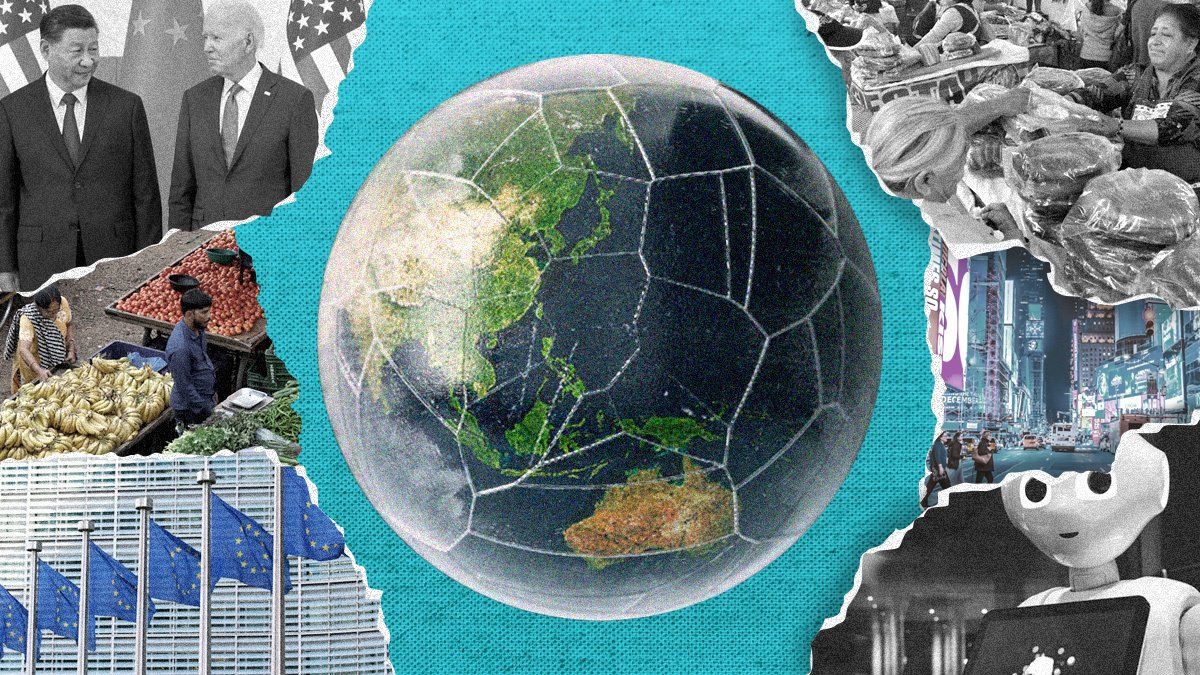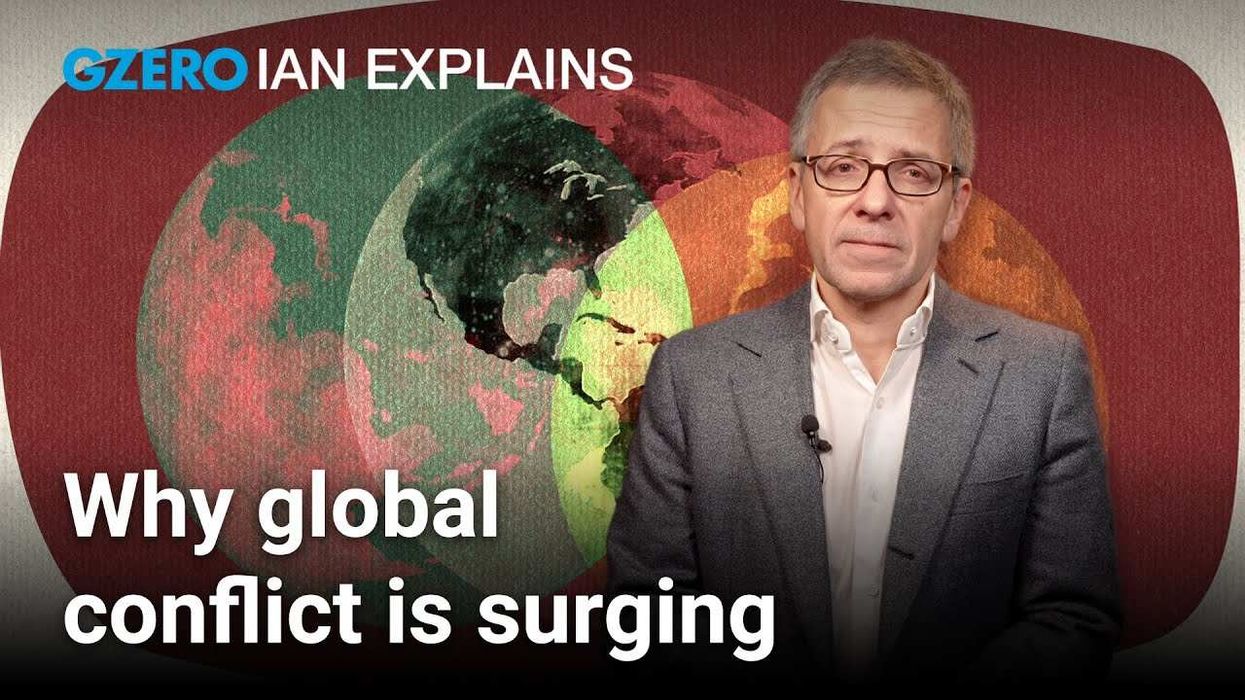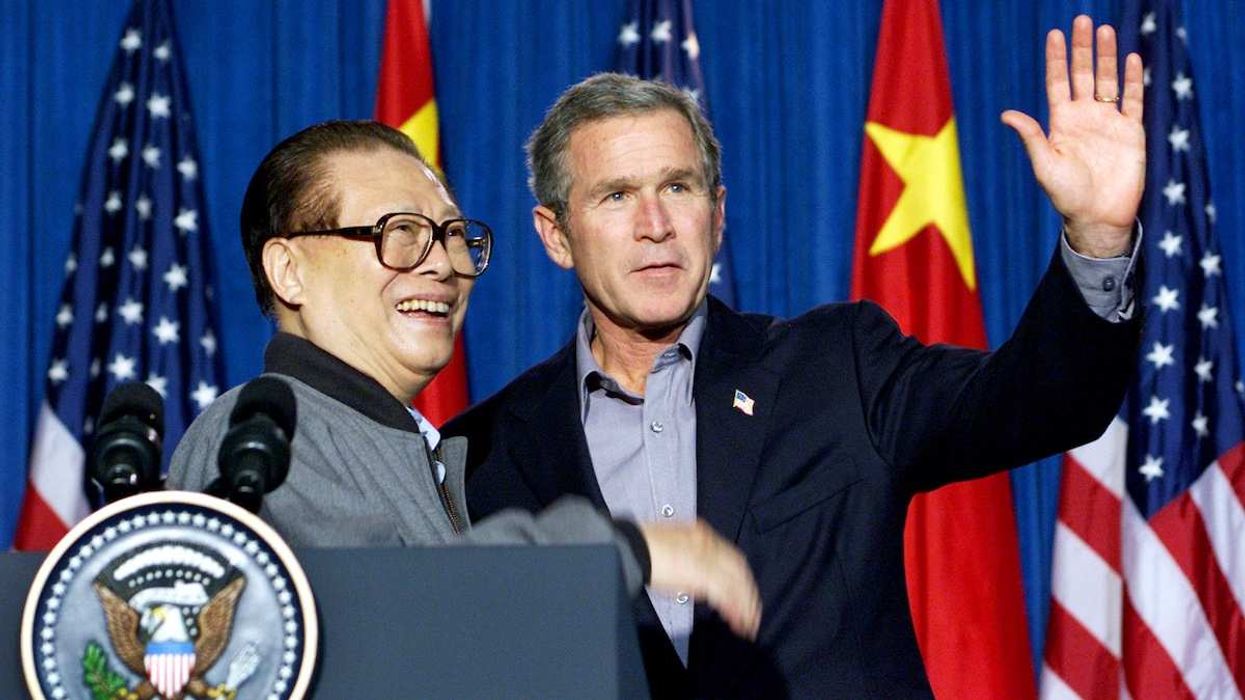Last week, I wrote about the dismal state of global affairs and made the case that a series of urgent challenges – the Israel-Hamas war, the Russia-Ukraine war, China’s economic troubles, and America’s political dysfunction – have made this the most geopolitically turbulent era of my lifetime.
As we turn to 2024, however, there are also positive stories that deserve much more attention than they receive – trends that promise more stability in geopolitics, more resilience for the global economy, and greater dynamism for the international system.
Relative stability in US-China relations
The most important geopolitical relationship in the world is still almost entirely devoid of trust. And yet, it is increasingly looking like an oasis of stability compared to most other headlines.
The productive Biden-Xi meeting at the APEC summit in San Francisco in November was a useful reminder that the governments of both countries are geopolitical adults. Both prefer stability to chaos. Each has tried to contain the damage from international emergencies. So while the US and China have very different views on Ukraine and Israel, they’ve carefully avoided actions that might expand the fighting’s fallout.
Indeed, the recent charm offensive fostered by China’s domestic economic challenges – a far cry from the wolf warrior diplomacy of Xi’s first two terms – is likely to continue in 2024. Even if it’s only a “tactical” retreat and not reflective of a genuine change of heart by Xi, China’s economic problems aren’t going to be resolved anytime soon. Beijing will accordingly remain geopolitically risk-averse.
To be sure, we should still expect conflict between the US and China. After all, the world’s two most powerful countries neither like nor trust one another. They are continuing down the path toward a technology cold war, with Americans using export controls to limit China’s development of world-class semiconductors and artificial intelligence, while the Chinese use critical minerals and green tech for much the same purpose. Their relationship will continue down the path of managed decline and a “de-risked” globalization.
But unlike the conflicts in the Middle East and Ukraine, US-China tensions are constrained from spiraling out of control by enduring interdependence and strong guardrails. In a global environment of such instability, that makes the US-China relationship look benign (yes, in part, because lots of other things look so much worse).
India as a bridge to the Global South
For all its many shortcomings, India is a politically stable democracy, and the stall of China’s growth has made India’s historic economic expansion that much more important for the global economy. But this isn’t India’s most important contribution to the world in 2024. Instead, I’m highlighting India because of its emerging role as a crucial bridge between the Global South on one side and the United States, Japan, and Europe on the other. It’s hard to overstate the geopolitical importance of this leadership role for Delhi.
Much of the developing world feels alienated by the role the US and advanced industrial economies play in international politics and the global economy. They endured a pandemic in which wealthy countries stockpiled vaccines and poorer countries took on more debt. They see that the industrialized giants, which have pumped centuries of CO2 into the atmosphere and are still shrugging off calls to pay for the global damage, now want developing countries to cut emissions. They see how much the Western powers care about Ukrainian refugees and how little they care about Palestinians and their children with nowhere to run in Gaza. They feel the price effects of Western sanctions on Russia, Iran, and others.
But when India – the biggest, strongest economy in the developing world, a country whose independence of thought and action is not in question – works to strengthen its relations with the US and its G7 allies, that’s an endorsement of pragmatic relations with the West.
India’s role as a bridge makes the existing global architecture both more stable and more inclusive. It helps prevent a China-led and still-expanding BRICS partnership from becoming a geopolitical counterweight to the G7. Further, India is one of the very few countries in the world – certainly the largest – where the outcome of the 2024 US election doesn’t particularly matter. Prime Minister Narendra Modi has proven he can get along with both President Joe Biden and former President Donald Trump, and he has much better odds of winning an election in 2024 than either of them.
Will India’s current foreign policy direction outlive Modi and the growing pains it will face? We can’t yet say. But for 2024 and the foreseeable future, the world has picked up surprising geopolitical resilience from India’s new role.
A stronger EU
There’s no doubt that Europe will face economic challenges in 2024. But a series of crises over the past decade – the pandemic, climate change, and the Russian invasion, made worse by the trauma of Brexit – has solidified the multinational political commitment to the world’s most ambitious experiment in supranational governance. As a result, the European Union is strengthening as an institution.
A stronger EU leaves euroskeptics in France, Italy, and other EU states groping for new political arguments. Italy’s Prime Minister Giorgia Meloni has moderated her country’s budget-busting economic populism. Voters in Poland have pushed out their country’s Brussels-defying illiberal government. Fist-shakers like Hungary’s Viktor Orban are left without leverage to extort concessions from Brussels. And though populists have scored recent gains in the Netherlands, Slovakia, and Germany, none of this has undermined the strength of the European Union – and they won’t matter to EU elections next year.
There is plenty of anger directed at Brussels bureaucrats and much resistance to more centralized EU decision-making. But as we enter 2024, the European Union’s social contract has never been stronger, more resilient, or more necessary.
Mexico’s political stability
Mexico has a dynamic economy that is strongly integrated into the global economy and is a lead beneficiary of the growing nearshoring trend. While it helps to be the top trade partner of the world’s largest economy, the country’s political predictability is helping it capture more benefits from that relationship.
Likely incoming president Claudia Sheinbaum has the backing of enormously popular outgoing leader Andres Manuel Lopez Obrador, but she’s a committed technocrat with strong relations with the domestic and foreign business community. In a country with one of the largest and most talented bureaucratic classes in the developing world, it’s hard to overstate the value of those qualifications. Sheinbaum also has the advantage of simultaneous credibility with the activist left that makes up Lopez Obrador’s political base.
Just as India can act as a bridge between the Global South and the G7, Sheinbaum can create better opportunities for new links between North, Central, and South America. This push for greater hemispheric integration in the world’s most geopolitically stable region will be important for years to come. While the domestic and regional politics won’t favor a new multilateral trade deal for the foreseeable future, public-private partnerships could eventually help create something increasingly close to a regional US-led Belt and Road-style project for the Americas down the road.
The divided states of America
Though Americans hold their national political institutions in historically low regard, that’s not true at the local level. In fact, the decentralization of US politics has allowed for a free market of political strategies driving some of the most remarkable growth and human capital attraction stories in the developed world.
Among blue states, the Bay Area in Northern California (home to Silicon Valley) leads the way in global artificial intelligence development. The greater New York City area, meanwhile, is arguably the world’s most global metroplex for its availability of capital and its power to attract diverse top-level talent. It also remains the epicenter of global finance.
Among red states, Texas leads the US not only in fossil-fuel production but also in post-carbon energy production and supply chains. South Florida’s ability to attract and drive finance, banking, and tech, meanwhile, has powered one of the nation’s most remarkable surges in inbound investment growth.
It’s important to remember the economic scale here. Florida’s economy is larger than Turkey’s. New York’s economy is larger than South Korea’s. Texas’ economy is the same size as Italy’s. California’s economy is larger than Britain’s. Blue and red states represent radically different growth models, but the decentralization of political and economic power nationally allows the US to become a laboratory of competing socioeconomic experiments on the scale of major industrialized countries. Add record levels of federal infrastructure investment, the impact of industrial policy from the Biden administration, and job creation through the pandemic, and there’s good reason to believe the US still has plenty of growth in store despite the increasingly alarming dysfunction in the nation’s capital.
The promise of AI
Artificial intelligence will create an entirely new form of globalization, one exponentially faster and more transformative than the globalization unleashed by free global trade and investment in recent decades. Generative AI is already advancing three times faster than Moore’s law, with its capacity doubling every six months. Today’s AI products will look like children’s toys when compared to the tools we’ll access even two years from now. We are about to experience more technological, social, political, and geopolitical change in the next decade than we’ve experienced in the past half-century.
In the coming few years, everyone in the world with digital access, no matter where they live, will be able to access state-of-the-art intelligence on health care, education, and agriculture. We will have metrics that help us understand how our world actually works – through a better understanding of everything from supply chains and traffic control to disease spread and deforestation. A world that can be monitored, with changes that can be measured in real-time, can be governed and sustainably developed far more efficiently.
The globalization of the past half-century has disrupted the world’s climate and the political stability of many countries around the world. AI will add to the stream of toxic content that humans ingest through the internet and social media, and it will disrupt our economies and our geopolitics in ways we can’t yet predict.
But AI will also become the most powerful human development tool the world has ever seen, helping people live longer, healthier, and more productive lives than at any time in history. We desperately need these tools. And they’re coming faster than we think.
********
We live in a world of crises. Over the past quarter century, we have endured financial upheaval, major terrorist attacks, wars, floods of refugees, climate fallout, populist distortions of politics, a historic pandemic, epidemics of disinformation, and still more wars. There is no doubt that we will be talking about new conflicts and crises inside the United States, inside China, across Europe, and in many parts of the developing world again next year.
The good news is that in the months and years to come, we will find still more possibilities for progress in these crises. And as our world becomes more dangerous, the number of human beings capable of bringing about positive change – in our world, within our countries, in our neighborhoods, and within our families – will grow.
This is the human resilience that has served us so well during our short time in this little sphere we call home. And now we will have tools our grandparents could not have imagined that can help us – and help one another – to create new and better possibilities for all of us.



















